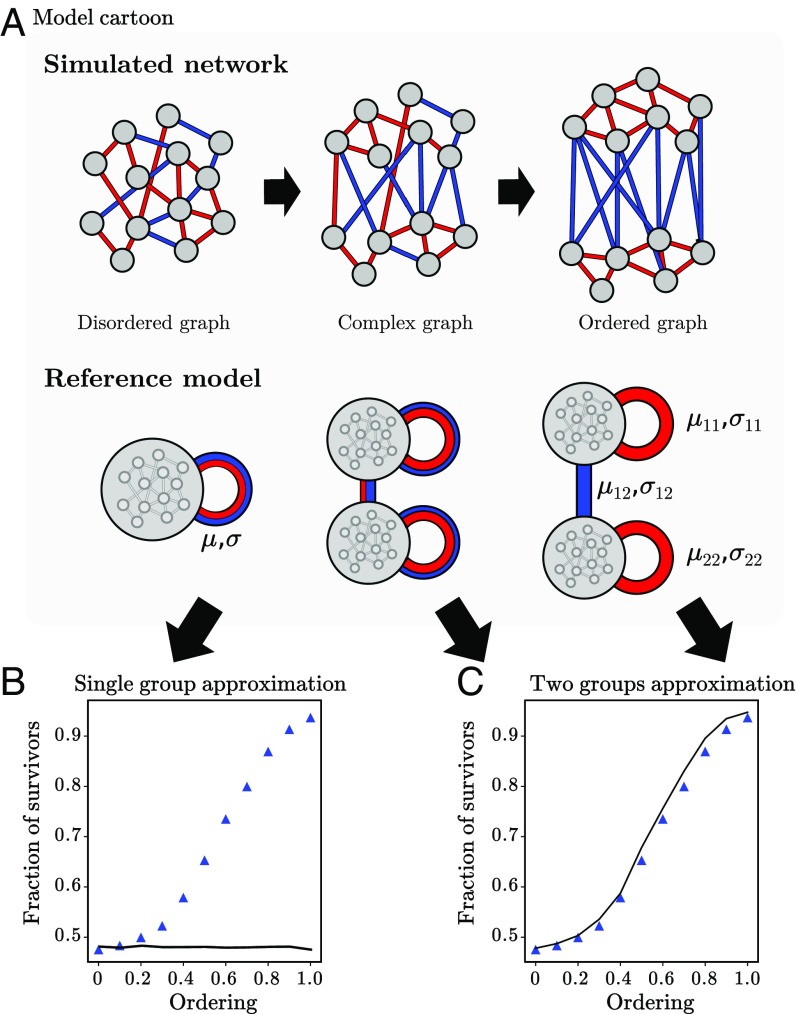Fig. 5.
Genericity beyond full disorder. We give an example of structure: two functional groups with competitive and mutualistic interactions. (A) Cartoon of the model. In the ordered limit, all intragroup interactions are competitive and all intergroup interactions are mutualistic. The ordering parameter is the probability to rewire interactions without respecting group structure. (B) Fraction of surviving species in the assembled community for the simulation model (symbols) against analytical predictions in the disordered limit (solid line) which cannot account for ordering. (C) Same data, but the reference model is extended with more structure, distinguishing between parameters for intergroup and intragroup interactions. It successfully predicts community properties for any degree of ordering, even the complex intermediate case where group boundaries are blurred.

